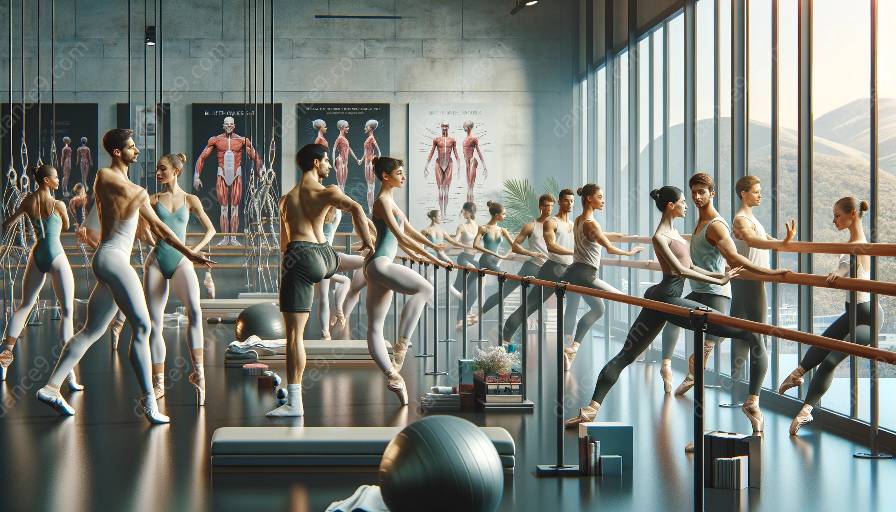Classical ballet and contemporary dance are two distinct dance forms that differ in physical demands, impacting the health and well-being of dancers. Understanding these differences is crucial to appreciating the historical and theoretical context of ballet.
Physical Demands of Classical Ballet
In classical ballet, dancers adhere to traditional techniques and movement vocabulary characterized by precision, symmetry, and control. The physical demands of classical ballet are rooted in centuries-old techniques that require a strong emphasis on turnout, extension, and alignment.
Turnout: Classical ballet places significant emphasis on turnout, which refers to the outward rotation of the hips and legs. Dancers strive to achieve a 180-degree turnout, demanding exceptional strength and flexibility in the hip, knee, and ankle joints.
Extension: Classical ballet requires dancers to execute high extensions of the legs, often reaching 90 degrees or higher. This demands rigorous training to develop and maintain the necessary muscular strength and flexibility.
Alignment: Proper alignment is vital in classical ballet to ensure balance, stability, and injury prevention. Dancers must maintain an elongated spine, engaged core, and precise placement of the pelvis and legs.
Physical Demands of Contemporary Dance
Contemporary dance encompasses a diverse range of movement styles that often defy traditional balletic norms. Dancers in contemporary dance are encouraged to explore freedom of movement, expressivity, and individuality, leading to unique physical demands.
Freedom of Movement: Unlike classical ballet, contemporary dance emphasizes fluidity and organic movement, allowing for a wider range of motion and expression. Dancers are encouraged to move in ways that may deviate from strict ballet techniques, requiring adaptability and versatility.
Expressivity: Contemporary dance often integrates emotional and psychological elements into movement, demanding dancers to convey narratives and themes through physical expression. This emphasis on storytelling and emotive movement influences the physical demands placed on contemporary dancers.
Individuality: Contemporary dance celebrates individuality and innovation, prompting dancers to explore and develop their unique movement vocabulary. This demand for creativity and self-expression contributes to the diverse physical demands of contemporary dance.
Impact on Health
The contrasting physical demands of classical ballet and contemporary dance have significant implications for the health and well-being of dancers. While classical ballet emphasizes precision, control, and technical proficiency, contemporary dance prioritizes creativity, freedom, and individual expression. Both forms of dance require rigorous training, discipline, and dedication, but the specific physical demands can have varying effects on a dancer's physical and mental health.
Classical Ballet: The intense focus on turnout, extension, and alignment in classical ballet can lead to increased risk of injuries such as muscle strains, tendonitis, and stress fractures. Furthermore, the pursuit of aesthetic perfection in classical ballet may contribute to mental and emotional pressures, potentially leading to body image issues and performance anxiety.
Contemporary Dance: The emphasis on individuality and creative exploration in contemporary dance may result in a more diverse set of physical demands, potentially reducing the risk of overuse injuries associated with the repetitive nature of classical ballet. However, the expressive and emotive aspects of contemporary dance may also pose challenges to a dancer's mental and emotional well-being, as they navigate the demands of storytelling, vulnerability, and self-expression.
Connection to Ballet History and Theory
Understanding the differences in physical demands between classical ballet and contemporary dance is essential to appreciating the historical and theoretical evolution of ballet as an art form. Classical ballet traces its roots to the royal courts of the Renaissance and Baroque eras, where the codification of precise techniques and movement vocabulary laid the foundation for the physical demands seen in classical ballet today.
On the other hand, the emergence of contemporary dance in the 20th century marked a departure from traditional balletic norms, with choreographers and dancers seeking to break free from established conventions and explore new forms of movement expression. This departure from tradition led to the development of diverse physical demands that continue to evolve and redefine the boundaries of dance as an art form.
By understanding the historical and theoretical context, we can recognize that the physical demands of classical ballet and contemporary dance are reflective of broader societal and artistic shifts throughout history. The juxtaposition of these physical demands provides insight into the evolution of dance as a dynamic and multifaceted art form.





























